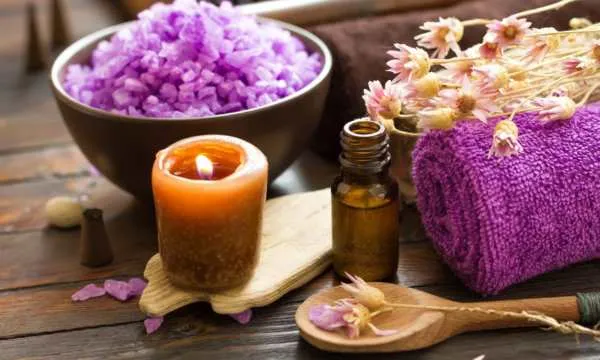Massage therapy is a physically and mentally demanding profession that requires therapists to be constantly on their feet, using their hands and arms to manipulate muscles and tissues for extended periods.
Ad
The job can take a toll on the body and lead to burnout, injury, and stress. To provide the best care for their clients, massage therapists need to take care of themselves first.
One of the most effective ways to recharge their batteries is through relaxation strategies that promote rest, recovery, and rejuvenation. By incorporating these techniques into their daily routine, massage therapists can reduce muscle tension, improve circulation, boost their immune system, and enhance their overall well-being.
Ad
Some of the relaxation strategies that massage therapists can use include meditation, yoga, deep breathing, aromatherapy, and massage.
Understanding Stress and Relaxation
Massage therapy can be a rewarding career, but it can also be physically and emotionally demanding. To perform at their best, massage therapists need to take care of themselves and recharge their batteries regularly. One of the most effective ways to do that is through relaxation strategies.
Ad
Before discussing relaxation strategies, it’s important to understand stress and relaxation. Stress is a natural response to a perceived threat, whether it’s physical, emotional, or psychological.
When the body perceives a threat, it releases stress hormones such as cortisol and adrenaline, which prepare the body to fight or flee. This response is useful in short bursts, but chronic stress can have negative effects on the body and mind.
The Science of Stress
When the body is under stress, it activates the sympathetic nervous system, also known as the “fight or flight” response. This response increases heart rate, blood pressure, and breathing rate, and diverts blood flow away from the digestive and immune systems.
Chronic stress can lead to a variety of health problems, including high blood pressure, heart disease, digestive issues, and weakened immune function.
Benefits of Relaxation for Therapists
Relaxation strategies can help counteract the negative effects of stress and promote physical and emotional well-being. When the body is relaxed, the parasympathetic nervous system is activated, which slows heart rate, lowers blood pressure, and increases blood flow to the digestive and immune systems.
Relaxation can also reduce muscle tension, improve sleep quality, and enhance mood.
Massage therapists who incorporate relaxation strategies into their self-care routine may find that they are better able to manage stress and perform at their best. Some effective relaxation strategies include deep breathing, progressive muscle relaxation, meditation, and yoga.
It’s important for massage therapists to find the strategies that work best for them and make relaxation a regular part of their routine.
Techniques for Physical Rejuvenation
Massage therapists spend long hours on their feet, using their hands and arms to apply pressure and manipulate muscles. This can take a toll on their bodies, leading to physical strain and fatigue.
To combat these issues, massage therapists can use various techniques for physical rejuvenation.
Deep Tissue Self-Massage
One effective way to relieve muscle tension and soreness is through deep tissue self-massage. This involves using a foam roller, tennis ball, or other massage tool to apply pressure to specific areas of the body.
By targeting trigger points and knots, massage therapists can release tension and increase blood flow to their muscles.
Stretching and Yoga Practices
Stretching and yoga practices can also help massage therapists relieve tension and improve flexibility. Incorporating a few simple stretches into their daily routine can help prevent injury and reduce muscle soreness.
Yoga practices, such as restorative yoga or yin yoga, can be particularly beneficial for massage therapists, as they focus on relaxation and gentle stretching.
Ergonomic Considerations
Finally, massage therapists should consider ergonomic factors when it comes to their work environment. This includes using proper body mechanics and posture, as well as investing in ergonomic tools and equipment.
For example, using a massage table with adjustable height can help reduce strain on the therapist’s back and shoulders.
By incorporating these techniques for physical rejuvenation into their daily routine, massage therapists can improve their overall health and well-being, while also providing better care for their clients.
Mental and Emotional Well-being
Massage therapists often find themselves giving so much of themselves to others that they neglect their own mental and emotional well-being. Taking care of one’s own mental and emotional health is crucial to providing the best care possible to clients. Here are some relaxation strategies for massage therapists to maintain their mental and emotional well-being.
Mindfulness and Meditation
Mindfulness and meditation are two practices that can help massage therapists stay grounded and present in the moment. Mindfulness involves paying attention to the present moment without judgment, while meditation involves focusing the mind on a specific object or thought.
Practicing mindfulness and meditation regularly can help massage therapists reduce stress and anxiety, improve concentration, and increase feelings of well-being.
Setting Professional Boundaries
Massage therapists often have to deal with clients who may have different expectations or demands. It’s important for massage therapists to set professional boundaries to protect themselves and ensure that they can provide the best care possible to their clients.
This means being clear about what services they offer, what their fees are, and what their policies are regarding cancellations and rescheduling. Setting professional boundaries can help massage therapists avoid burnout, reduce stress, and maintain a healthy work-life balance.
By prioritizing their mental and emotional well-being, massage therapists can provide better care to their clients and avoid burnout.
Mindfulness and meditation practices can help them stay grounded and present in the moment, while setting professional boundaries can help them maintain a healthy work-life balance.
Creating a Sustainable Practice
Massage therapy can be a physically and emotionally demanding profession. Therefore, it is essential for massage therapists to create a sustainable practice that ensures their well-being and longevity in the field. This section outlines some strategies for creating a sustainable practice.
Scheduling and Time Management
Effective scheduling and time management are crucial for massage therapists to prevent burnout and maintain a healthy work-life balance. It is important to establish clear boundaries between work and personal time and to avoid overworking.
Massage therapists can use scheduling tools such as calendars and appointment books to manage their time effectively. Additionally, they can consider the following tips:
- Prioritize self-care activities such as exercise, meditation, and hobbies.
- Schedule breaks between appointments to rest and recharge.
- Avoid booking too many appointments in a day or week.
- Consider outsourcing administrative tasks such as scheduling and billing.
Client Interaction Strategies
Client interaction is a significant aspect of a massage therapist’s practice. However, it can also be a source of stress and emotional exhaustion.
Therefore, it is essential to establish healthy boundaries and communication strategies with clients. Some tips for effective client interaction include:
- Setting clear expectations for the massage session.
- Encouraging clients to communicate their needs and preferences.
- Avoiding overextending oneself to meet client demands.
- Developing effective communication skills to manage difficult clients or situations.
Professional Development
Continued education and professional development are essential for massage therapists to stay current with industry trends and techniques. Additionally, it can be a source of personal and professional growth. Some strategies for professional development include:
- Attending conferences, workshops, and seminars.
- Networking with other massage therapists and healthcare professionals.
- Seeking mentorship or coaching from experienced therapists.
- Reading industry publications and staying up-to-date with research.
By implementing these strategies, massage therapists can create a sustainable practice that promotes their well-being and longevity in the field.


